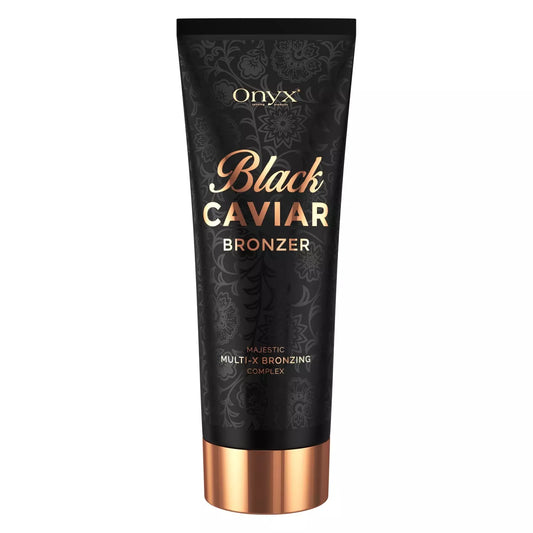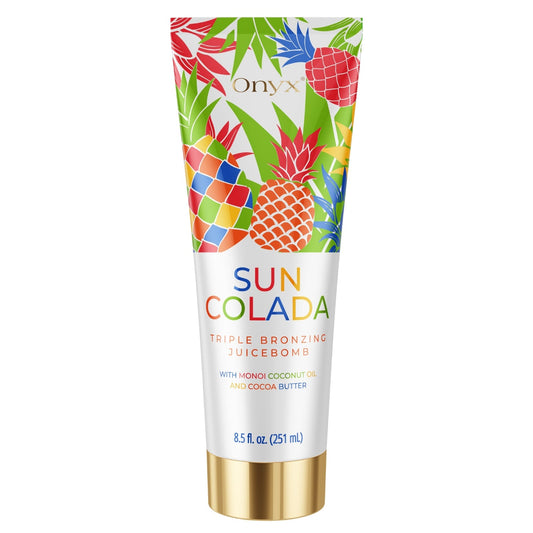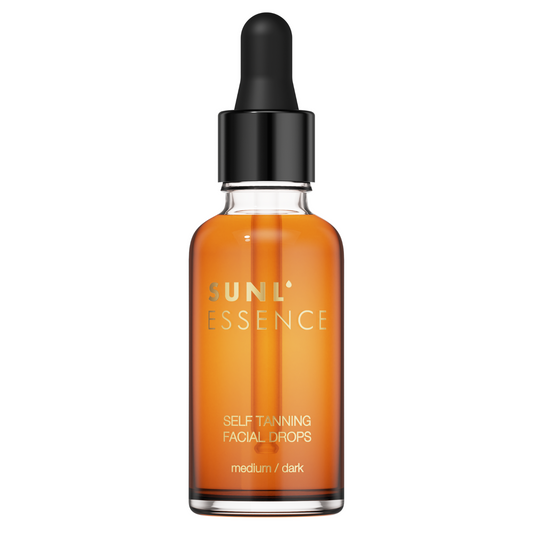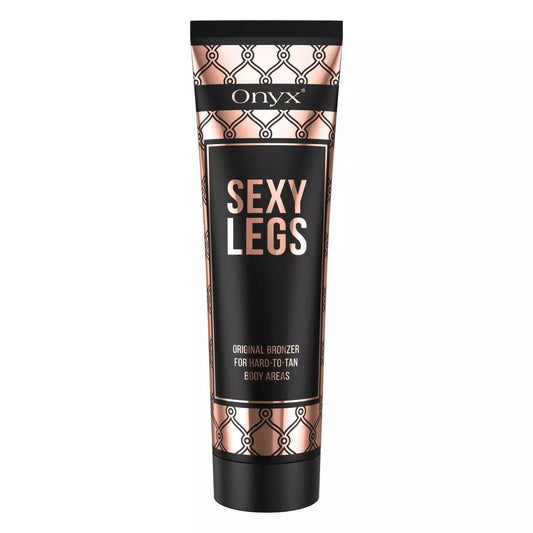Bestsellers
-
Black Caviar - Sunbed Bronzing Lotion & Tan Enhancer
Regular price € 29.95Regular priceUnit price / per -
Onyx Suncolada - Triple Enhancer Bronzer with Maximizes Dark Tan Results
Regular price € 29.95Regular priceUnit price / per -
Self Tanning Drops for Face Light/Medium
Regular price € 14.95Regular priceUnit price / per -
Sexy Legs - Sunbed Cream for Perfectly Tanned Legs
Regular price € 26.95Regular priceUnit price / per
Let customers speak for us
from 1065 reviews
I love this product! I have a hard time with the smell of some tanning lotion products, there is a common and particular ingredient that gives me a terrible headache. Not Onyx, not only does it smell amazing but it is super hydrating!!! Will definitely purchase again and again.

Absolutely love! Smell is great! Will get you super dark in no time. I used it three times now and I have an amazing tan!I plan on buying more.

Sehr gute Creme, riecht angenehm für Frau und Mann. Zieht schnell ein. Die Haut fühlt sich lange weich und geschmeidig an.

Super !

Ich hab tatsächlich daa Gefühl, es bringt was. Geruch ist inordnung

Edel verpackt .Diese Creme ist wirklich gut ,Zieht schnell ein ,hinterlässt keinen Klebe Film.Die Haut fühlt sich angenehm an. Und es ergibt eine schöne gleichmäßige Bräune. (Habe sie im Solarium benutzt)Der Geruch ist angenehm, Aber für mich persönlich nicht so mein Geschmack.es könnten weniger Duftstoffe Drinne sein.

Stafft die Haut und intensiviert deutlich die Bräune. Empfehlenswert!

Ich liiiiebe diese Creme !! Sie hält was es verspricht habe es 1x benutzt und direkt eine schöne Bräune bekommen, was ich noch nie bekommen habe von anderen Herstellern wie Tannymax , Australian Gold usw. ich kann sie echt nur empfehlen für alle die schwer braun werden. Dafür gebe ich auch paar Euros mehr aus.

Da ich regelmäßiger Sonnenstudiogänger bin konnte ich es kaum erwarten diese Creme auszuprobieren. Im Vorfeld schon so einiges darüber gelesen das es zu unangenehmen Hautreizungen kommen könnte war ich anfangs ein wenig ängstlich es aufzutragen. Was soll ich sagen, es brennt bzw. brannte auf meiner Haut wie Feuer. Dennoch begab ich mich ins Sonnenstudio wie gewohnt und das Endergebnis hat mich schier umgehauen. So ein gravierender Unterschied wie sonst ohne Creme hätte ich vorher niemals gedacht, mit einem Durchgang hatte ich eine Bräune wie nach 5 Durchgängen.Man sollte sich bewusst sein das hier so einiges auf der Haut passiert aber das brennen ist mehr eine Gewohnheitssache und macht den Schmerz wieder mehr als wett, wenn man sich danach das Ergebnis anschaut.Wer eine wirklich extreme Bräune haben möchte sollte diese Creme wirklich mal ausprobieren, für Personen mit schwachen Nerven oder einer nicht allzu hohen Schmerztoleranz eher nicht zu empfehlen. Dennoch für mich jetzt immer Pflicht im Sonnenstudio!

Zieht schnell ein angenehmes hautgefühl

It's very moisturizing. Great intensity!!! Love it!!! ❤️

Ich habe mich für den Artikel entschieden durch die anderen Bewertungen und habe es nicht bereut! Sie haben einen angenehmen Duft! sind super zum auftragen und man glaubt es kaum, aber nach der ersten Solarium Nutzung sieht man schon eine bräune(ganz leicht)! Sie zieht auch schnell ein und man riecht nachher nicht nach verbrannter haut! Ich würde sie jedem empfehlen der wert darauf legt eine gute Creme zuhaben!

der Geruch ist bei uns im ganzen Haus verteilt nach einem Solariumgang...total angenehmer Duft. Bräunung ist sehr gut und läßt sich super verteilen. Sehr ergiebig.

Stolzer Preis, sonst ganz ok

Die beste 🤩🤩🤩
Onyx Blog posts
View all-
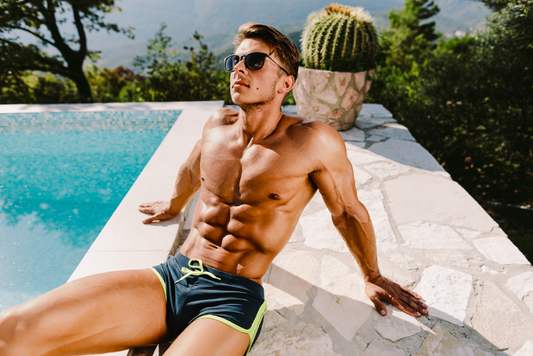
5 tips on how to tan safely for men
Men who are just starting their tanning adventure have many questions. Do guys use sunbeds? How to take care of your skin and better prepare yourself for a tanning session?...
5 tips on how to tan safely for men
Men who are just starting their tanning adventure have many questions. Do guys use sunbeds? How to take care of your skin and better prepare yourself for a tanning session?...
-
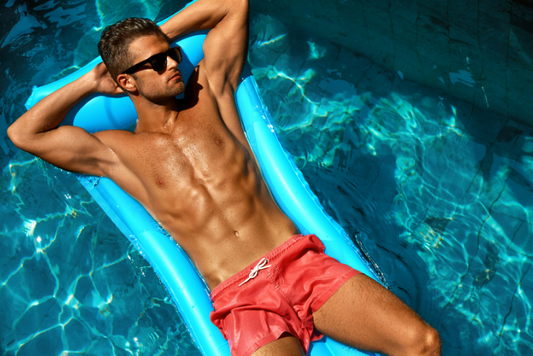
Tanning for men - hit or miss?
It's a well known fact that the vast majority of tanning salon customers are women. Does this mean that men do not tan at all? In today's article, we will...
Tanning for men - hit or miss?
It's a well known fact that the vast majority of tanning salon customers are women. Does this mean that men do not tan at all? In today's article, we will...
-
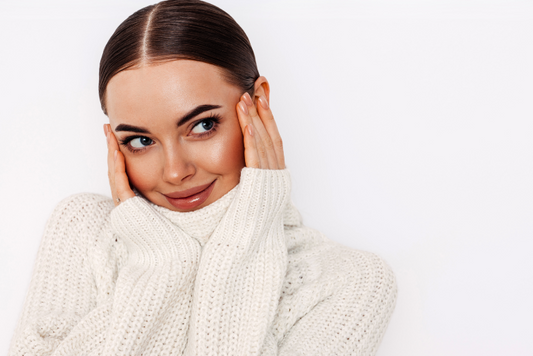
Can you tan in the winter?
Summer is over and you're thinking it might be time to forget about your bronze skin tone. Most people stop tanning when winter season starts. Is sun tanning in winter...
Can you tan in the winter?
Summer is over and you're thinking it might be time to forget about your bronze skin tone. Most people stop tanning when winter season starts. Is sun tanning in winter...
Q/A
How does tanning work?
Tanning beds use ultraviolet (UV) light to tan people. There are three types of UV; UVA, UVB, and UVC. Tanning beds are designed to concentrate optimal levels of UVA in conjunction with very low percentages of UVB, on the outermost layers of skin so as to stimulate the production of Melanin pigment, which is slightly pink in it’s dormant state, and cause it to turn brown after excretion. The more melanin cells that are present in the skin determine the amount of pigment that will be excreted and distributed, and therefore the extent of the tan. Tanning beds are designed to filter this UVC, as this is a harmful type of UV.
How often am I allowed to tan?
It is suggested a 24-hour time period to pass between tanning sessions. Pigmentation and/or over-exposure may not be fully visible for 12 to 24 hours after your original session. Two tanning session within a 24 hour period could result in an unintentional burn. Ask your salon for any specific requirements.
What causes the scent that I smell after tanning?
In a word, “melanin” is the cause. Ultraviolet light in the UVA range causes melanin to enlarge and turn brown. During the process, dermatologists say a chemical reaction takes place. A natural side effect of the reaction is the aroma. This occurrence is normal whether you've been tanning inside or outside. Some tanning lotions have been designed to minimize or prevent the odor from occurring, but ultimately a shower will remove the odor.
Do I really need to wear goggles while tanning?
ABSOLUTELY! It is of utmost importance! Your skin can tan-your eyes can't. Federal law requires all tanning salons to supply customers with proper eye protection. This eyewear must meet federal government standards by blocking 99% of UVA and UVB rays. Closing the eyelids, wearing sunglasses, or using cotton balls over your eyes is not adequate protection as the UV rays will easily penetrate these things and continue into the eyes.


